Golisi L2 Compact Mini Charger
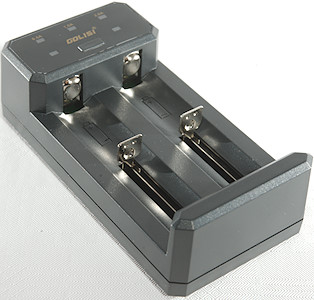
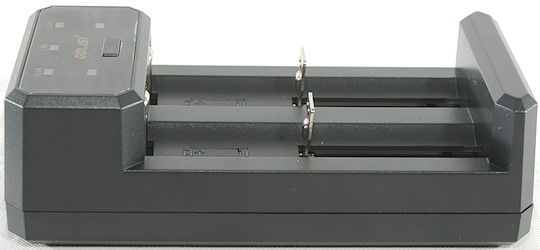
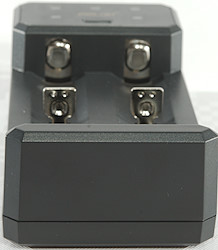
A 2 channel universal charger from Golisi.
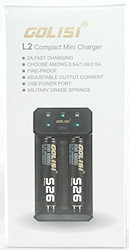



It arrived in a white cardboard box with specifications on.
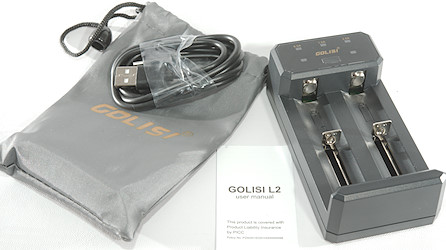
The box included the charger, a USB cable cable, a pouch and the instruction sheet.

Charger and cable fits in the pouch.
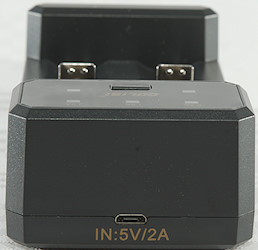
The charger has a micro USB power input.
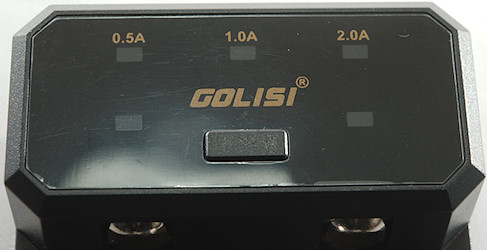
The user interface is one button and a couple of leds.
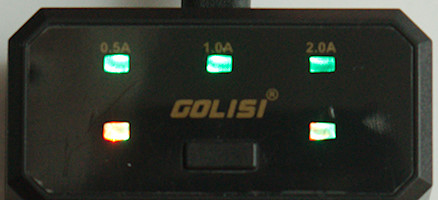
There is 3 green and 2 red/green leds.
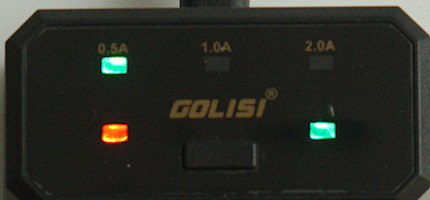
The top row shows charge current, hold down the button when a LiIon battery is charging to change current.
The bottom leds will be red when charging and green at other times.
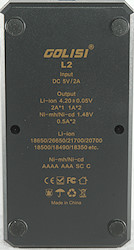
On the bottom of the charger there are specifications.
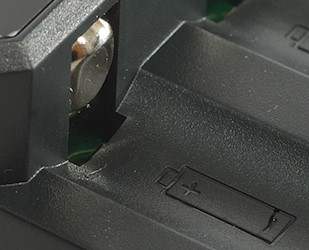
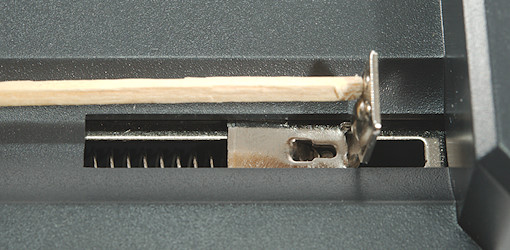
The slots uses the classical slider construction and it works fine.
The slots can work from 32.5mm to 71.2mm. This covers unprotected batteries, but some protected will be too long.


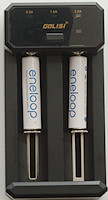

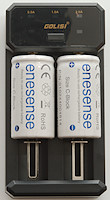
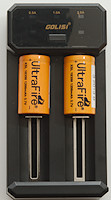
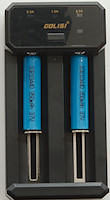
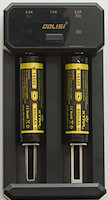
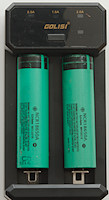


The charger can handle 70 mm long batteries including flat top cells.
Measurements
- Discharge LiIon battery with 0.03mA when not connected to power.
- When power is connected with a full battery, it will charge with about 0.5mA.
- Below 0.1 volt the charger will report error and charge with 3mA
- Below 1.6V the charger will assume NiMH and charge with 0.5A
- Above 3V the charger will assume LiIon.
- Initial current is always 0.5A
- A single LiIon can be charged with 2A
- One or two LiIon can be charged with 0.5A and 1A
- One or two NiMH can only be charged with 0.5A
- Charger will not restart when voltage drops.
- It will restart charging on reinsertion of the battery or power cycling.
- Power consumption when idle without battery is 7mA from USB
Charging LiIon
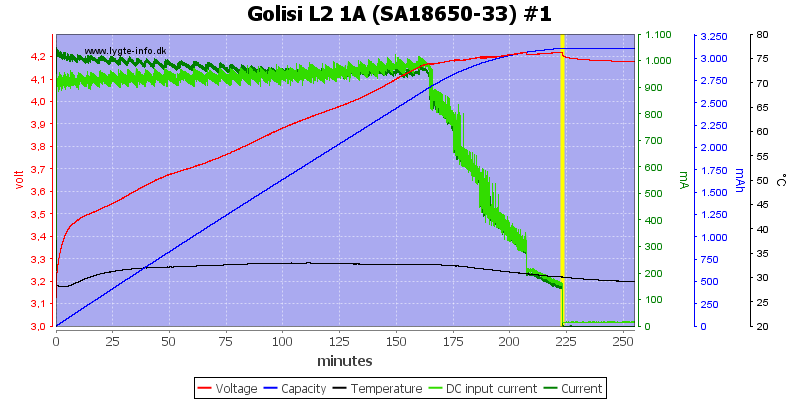
The charge curve is a nice CC/CV curve with about 140mA termination current.
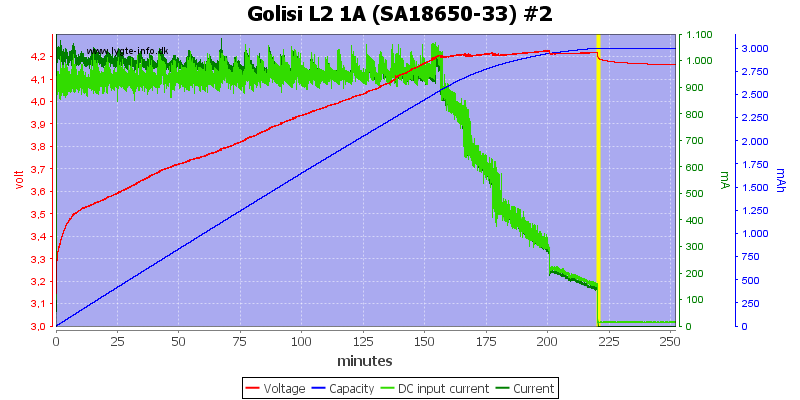
The second slot is similar.
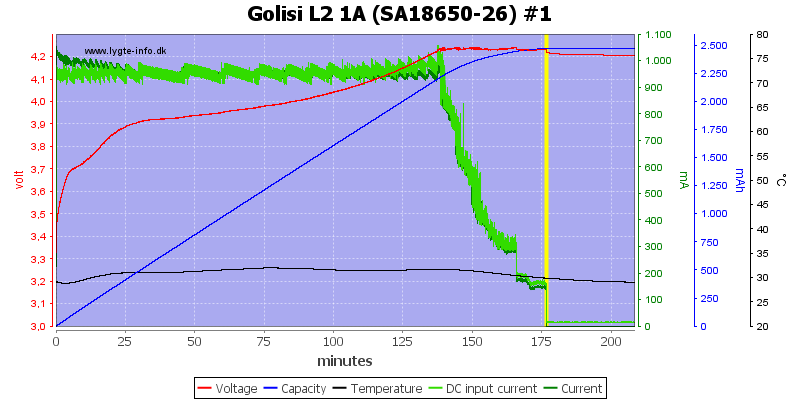
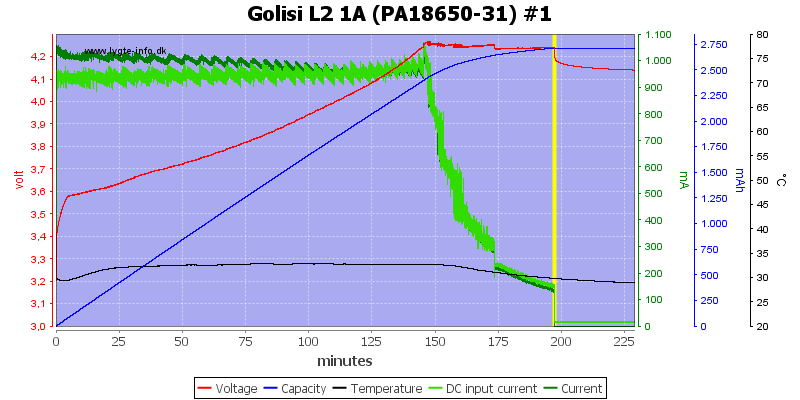
These two batteries are also handled nicely.
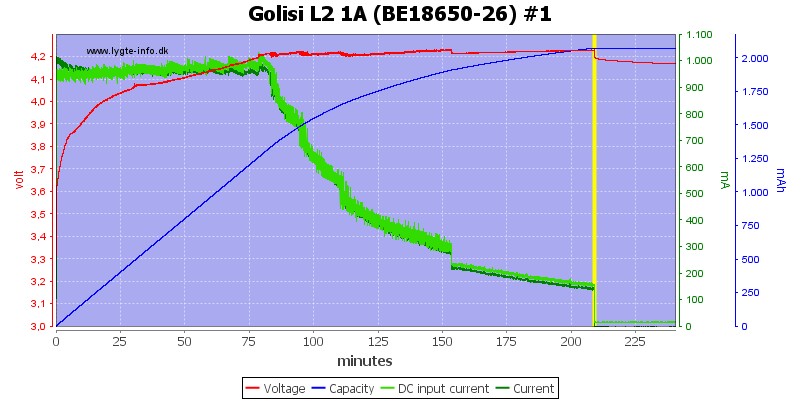
With this older cell the CV phase is, as expected, reached earlier.
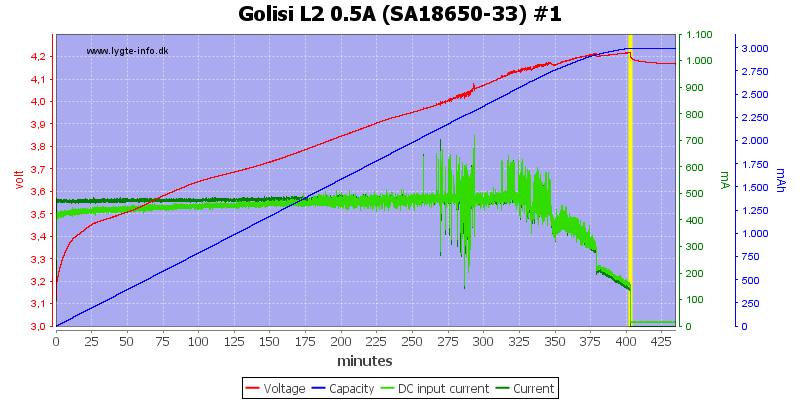
The charger is slightly unstable at 0.5A, but it do not affect the charging or the result, termination current is about the same.
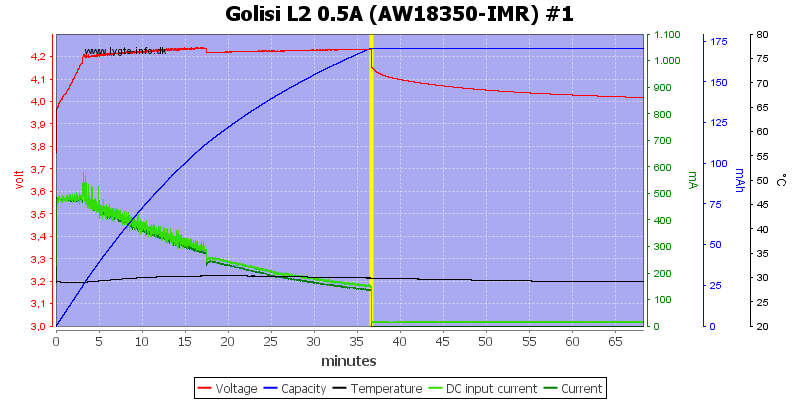
It can also handle my old and worn down cell.

A more regular small cell is charged nicely.
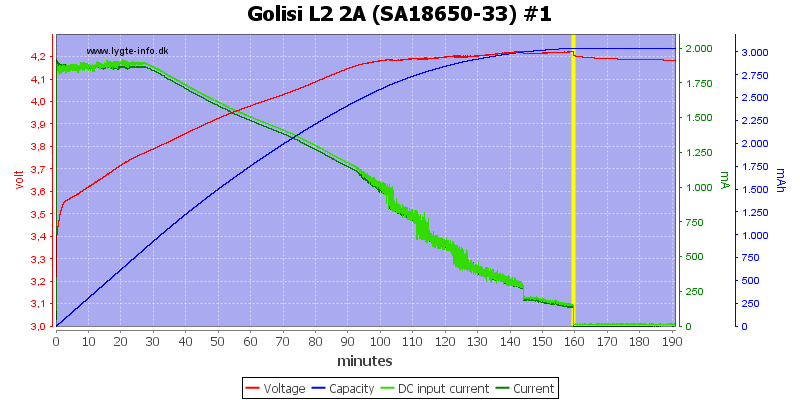
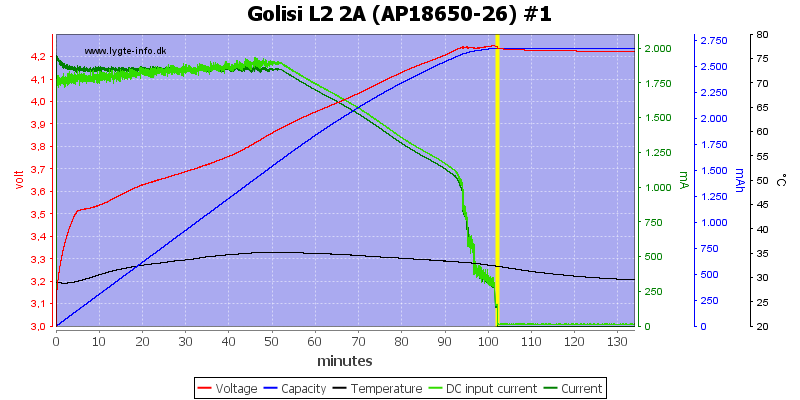
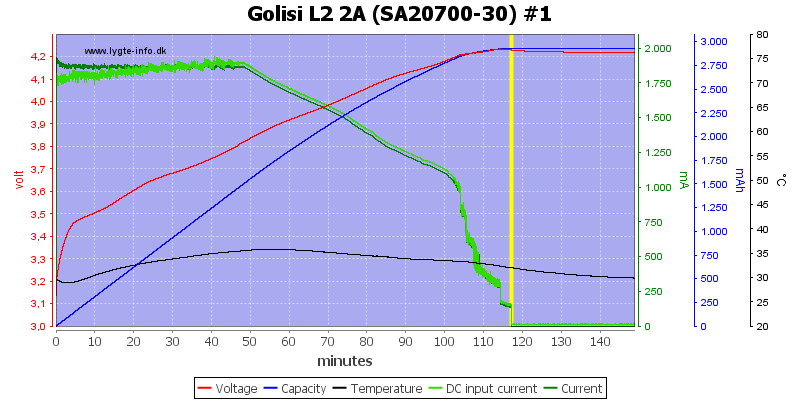
One cell can be charged at 2A, at least initially, when the voltage one the cell reaches about 3.8V the current is reduced (This is very common on USB chargers). The cell is charged faster than at 1A.

Two batteries at 1A works fine and fairly fast.
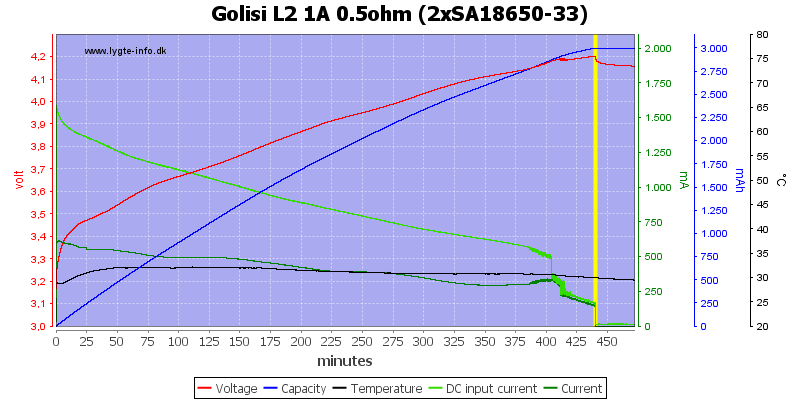
Using a 0.5ohm resistor in series with the USB power to simulate a weak charger or long cable slow down the charger significantly, but do not prevent it from charging the cells.
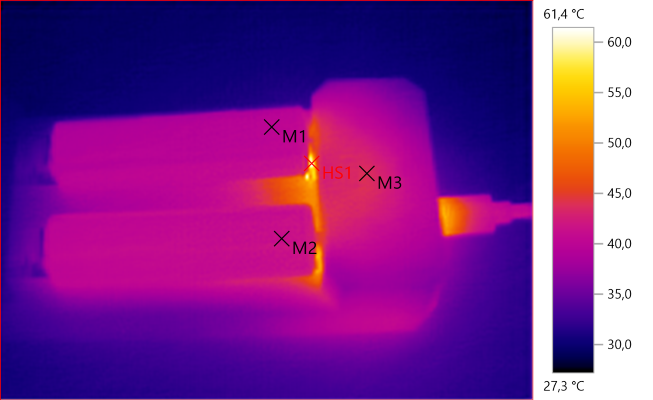
M1: 39.9°C, M2: 41.4°C, M3: 43.6°C, HS1: 61.4°C
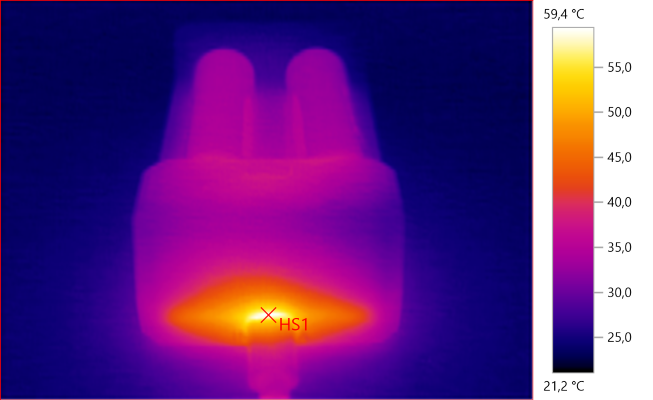
HS1: 59.4°C
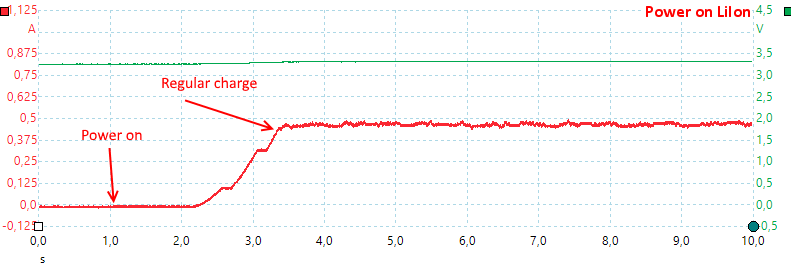
The charger needs less than 2 seconds to initialize.

Current can only be changed during charging.

The charger had a single dropout during this test and it need some time to adjust current when voltage increases, this means there will be rather large peak currents into the battery.
Charging NiMH

The charge curve looks fine and the termination looks like a -dv/dt or 0dv/dt
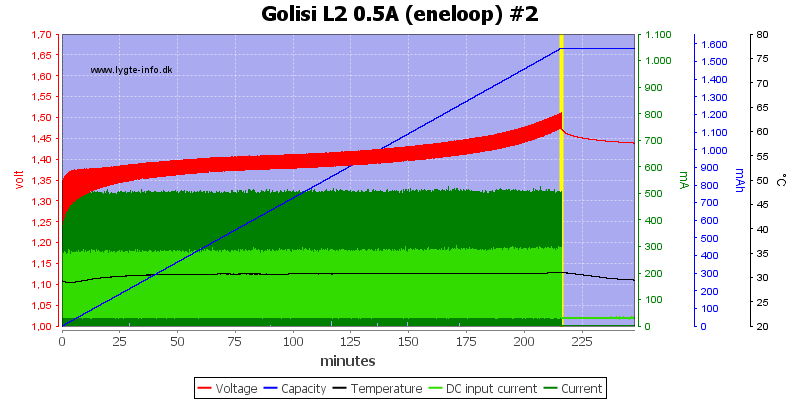
Here it is looks like voltage termination, but the voltage is lower than above? The battery is a bit below fill, but not that much.
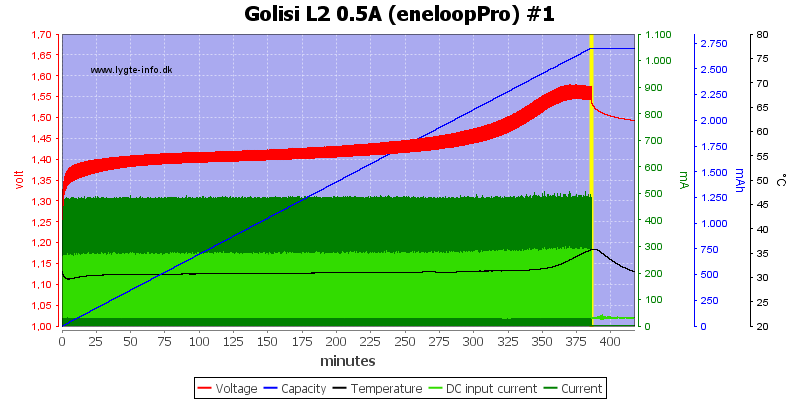
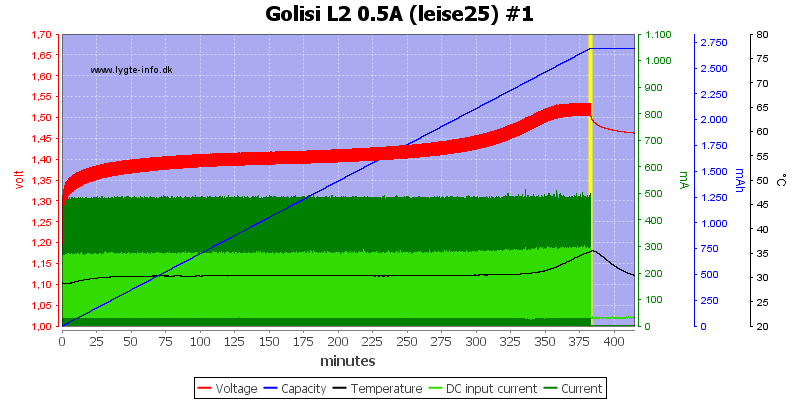
Both the EneloopPro and Leise has good termination
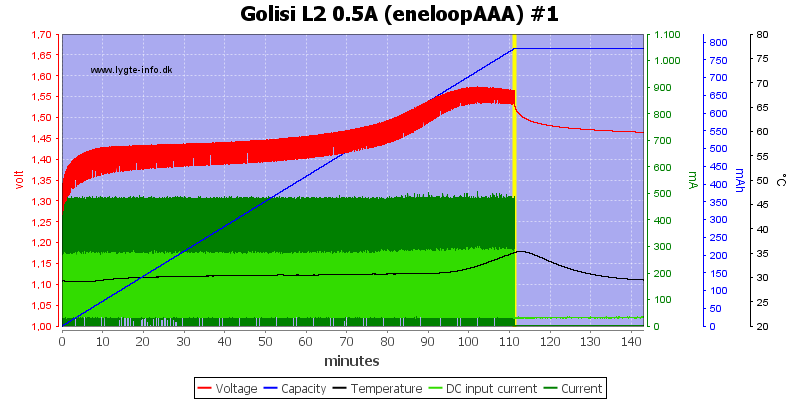
The AAA also looks fine.

A full battery needs some time to be detected due to the -dv/dt termination.
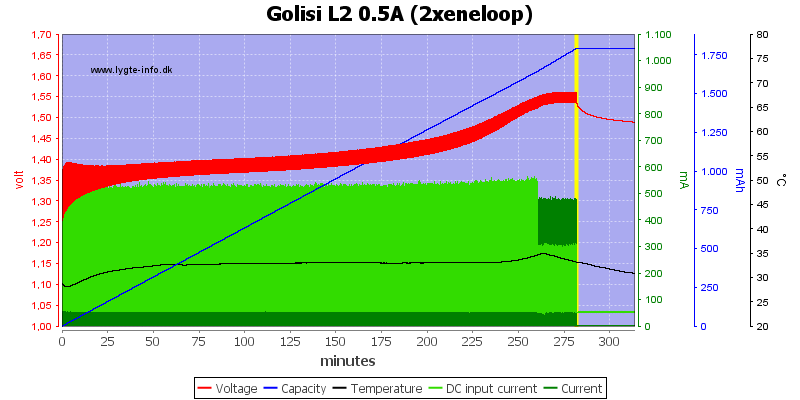
No problems with two batteries.
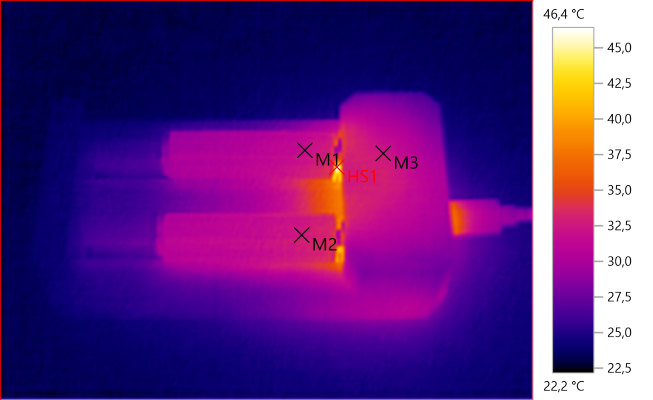
M1: 32.0°C, M2: 32.7°C, M3: 32.3°C, HS1: 46.4°C
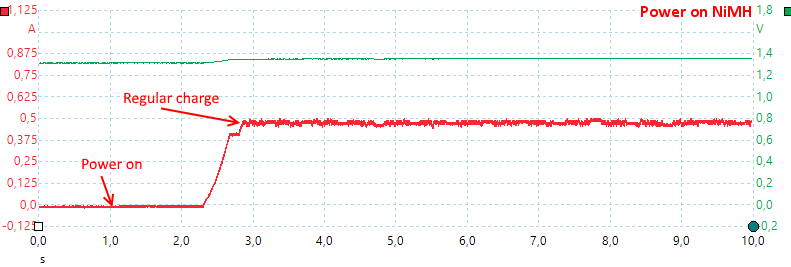
NiMH also initializes in less than 2 seconds.
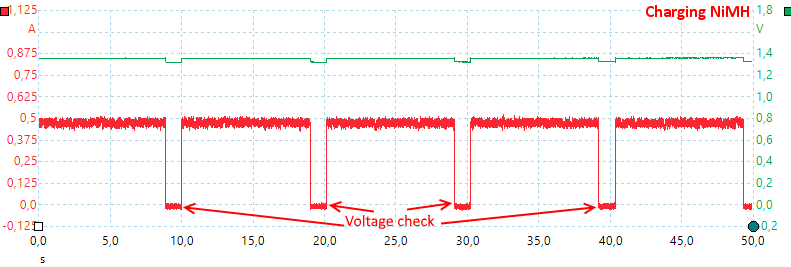
With NiMH the current is turned off to check the voltage.
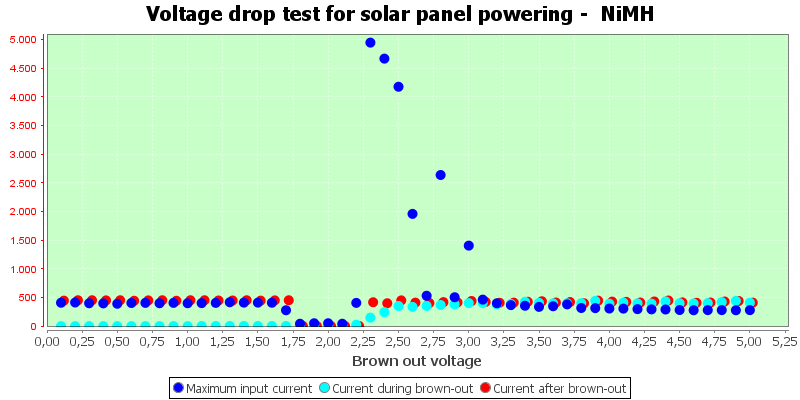
Here the charger hand more problems with recovering after a low voltage situation and again it had some very high current spikes.
Conclusion
The charger is good to charge both LiIon and NiMH, but I could have wished for an options for higher charge current with NiMH.
That the charger always starts at 0.5A makes it fairly fail safe.
Notes
The charger was supplied by Golisi for review.
Here is an explanation on how I did the above charge curves: How do I test a charger























































